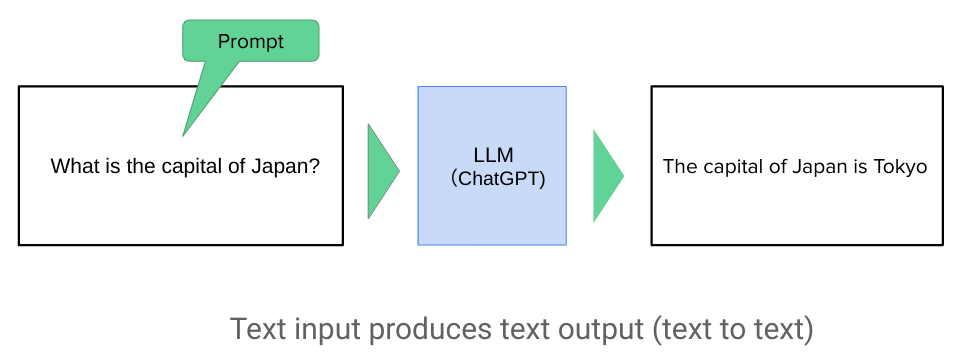I recently came across an interesting research paper, "Many-Shot In-Context Learning" (1), by Google DeepMind, and I'd like to share a brief overview. Although it's a highly technical paper, it offers valuable insights that we can apply to our own prompt writing. Let's dive in.
1. Utilizing Context Effectively
When you write prompts for language models or generative AI like ChatGPT, you probably input the information you want, like a search engine, such as "What is the capital of Japan?" However, generative AI can handle much larger amounts of information. For example, as shown in the chart below, you can load a PDF document and then write a prompt like "Summarize this," and the AI will output a summary of the PDF's content. Think of a prompt as an "instruction to the generative AI." The additional information you provide is called the context.
2. What's Needed to Use Generative AI in a Business Setting
Now that we have a basic understanding of how to use generative AI, let's consider what's needed to use it in a company or business setting. Obviously, when you represent your company and interact with customers, you wouldn't express "personal opinions or feelings." You wouldn't say, "I personally don't think this new product will sell." Specifically, companies have established rules and manuals that employees must follow. Normally, employees cannot violate these rules. Therefore, to use generative AI in a company, it must output answers that comply with each company's "rules and manuals," not just general answers. So, how do you convey these rules to the generative AI? One way is to input the "rules and manuals" directly into the generative AI along with the prompt, as shown in the chart above. Many recent generative AIs have "context windows" of 100,000 tokens or more. This represents the amount of information that can be input and output at once, and 100,000 tokens is about 70,000 words in English. You can input a considerable amount of "rules and manuals." Some models, like Google's Gemini 1.5 Pro, can input up to 2 million tokens, which is enough for about 3,000 pages of English manuals. That's amazing. These context windows are sometimes called "long context windows."
3. Many-Shot In-Context Learning
"Many-Shot In-Context Learning" is a technique that utilizes these "long context windows" even more effectively. You may have heard of a similar term, "Few-Shot Learning." "Few-Shot Learning" is a method where you first provide the generative AI with a few "question and answer pairs" as examples and then ask the question you want to know. For instance, you might give examples like "The capital of the United States is Washington, D.C." and "The capital of China is Beijing," and then ask the AI, "What is the capital of Japan?" "Many-Shot In-Context Learning" increases the number of these "question and answer pairs" to 10-10,000. This is said to improve accuracy. The graph below shows that in machine translation and summarization tasks, increasing the number of examples to 500-1,000 improves accuracy. 2 to the power of 10 is 1024. The idea is to put as many examples as possible into the "long context window" since it can easily handle them.
The relationship between accuracy and the number of examples in machine translation and summarization.
What do you think? If simply increasing the number of examples improves accuracy, it might be worth trying. For those who say, "I can't create so many examples myself," "Many-Shot In-Context Learning" also suggests a method to create synthetic data using an LLM (language model). If you're interested, please check out the paper. But if it's just about 10 examples, you could probably create them yourself. I'll give it a try and update here if I get good results. That's all for today. Stay tuned!
1) "Many-Shot In-Context Learning", Rishabh Agarwal, Avi Singh, Lei M. Zhang, Bernd Bohnet, Luis Rosias, Stephanie Chan, Biao Zhang, Ankesh Anand, Zaheer Abbas, Azade Nova, John D. Co-Reyes, Eric Chu, Feryal Behbahani, Aleksandra Faust, Hugo Larochelle, Google DeepMind, 22 May 2024, https://arxiv.org/abs/2404.11018
Copyright © 2024 Toshifumi Kuga. All right reserved
Notice: ToshiStats Co., Ltd. and I do not accept any responsibility or liability for loss or damage occasioned to any person or property through using materials, instructions, methods, algorithms or ideas contained herein, or acting or refraining from acting as a result of such use. ToshiStats Co., Ltd. and I expressly disclaim all implied warranties, including merchantability or fitness for any particular purpose. There will be no duty on ToshiStats Co., Ltd. and me to correct any errors or defects in the codes and the software.



